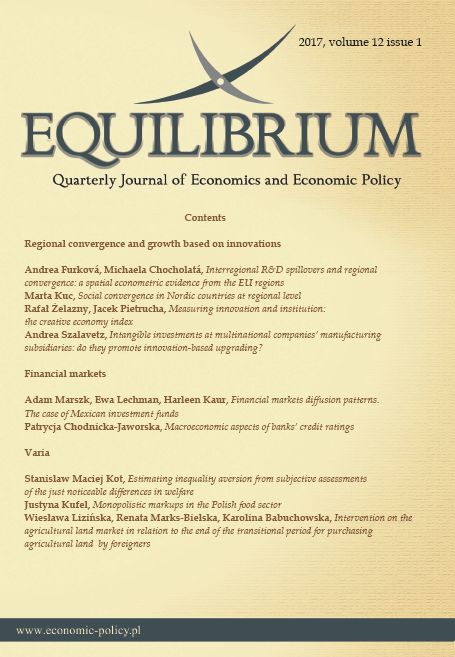ESTIMATING INEQUALITY AVERSION FROM SUBJECTIVE ASSESSMENTS OF THE JUST NOTICEABLE DIFFERENCES IN WELFARE
ESTIMATING INEQUALITY AVERSION FROM SUBJECTIVE ASSESSMENTS OF THE JUST NOTICEABLE DIFFERENCES IN WELFARE
Author(s): Stanisław Maciej KotSubject(s): Economy, National Economy
Published by: Instytut Badań Gospodarczych
Keywords: inequality; aversion; income; utility estimation
Summary/Abstract: Research background: In Economics, the concept of inequality aversion corresponds with the concept of risk aversion in the literature on making decision under uncertainty. The risk aversion is estimated on the basis of subjective reactions of people to various lottery prospects. In Economics, however, an efficient method of estimating inequality aversion has not been developed yet. Purpose of the article: The main aim of this paper is to develop the method of estimating inequality aversion. Methods: The method is based on two income thresholds which are subjectively assessed by surveyed respondents. Given the level of household income, just noticeable worsening of household welfare is perceived below the first threshold, whereas just noticeable improvement of household welfare is perceived above the second threshold. The thresholds make possible effective calculations of the parameter of the Arrow-Pratt’s constant inequality aversion utility function. In this way, an individual utility of income becomes an empirically observable economic phenomenon. Findings & Value added: In this paper, two theorems are proved which provide the guidance on how to identify a proper version of the above function. The proposed method is tested on the basis of statistical data from the archival survey conducted among Polish households in 1999. The statistical analysis of those data reveals the appearance of convex utility functions as well as concave ones. Nevertheless, the prevailing part of the Polish society exhibited inequality aversion in the year 1999. Another result of this paper is that inequality aversion diminishes as income increases.
Journal: Equilibrium. Quarterly Journal of Economics and Economic Policy
- Issue Year: 12/2017
- Issue No: 1
- Page Range: 123-146
- Page Count: 24
- Language: English

